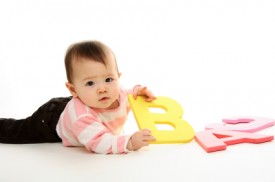 How early does environment begin to shape children into successful students or underachieving students? The answer has to do, in part, with how early babies start acquiring the skills needed to learn to read.
How early does environment begin to shape children into successful students or underachieving students? The answer has to do, in part, with how early babies start acquiring the skills needed to learn to read.
Watching Beth Connelly’s recent webinar, Breaking the Cycle of Underachievement, I was surprised to learn that children as young as four days old can distinguish the vowel sounds of the language in their natural environment. Four days old.
I couldn’t stop thinking about the implications of that timeframe. Suppose one child grows up in an enriched (typically high-SES) environment with a lot of stimulation and adult interaction, while another child grows up in a low-stimulation, low-interaction (typically low-SES) environment.
As Hart and Risley noted in their landmark study, the first child will be exposed to 42 million more words than the second child by age four. That difference in language exposure plays a big role in establishing the achievement gap that—without effective intervention—continues to widen as learners progress through school and then out into the world.
When I think about how babies as young as four days old are extracting information from the words they hear—distinguishing sounds and learning the building blocks of language—it is easy to understand how a child’s ability to learn can increase or decrease depending on the degree of stimulation in the learning environment.
It’s not just the richness of the learning interactions that influences learning ability, however; babies with frequent ear infections or fluid in their ears can also have trouble extracting accurate information about language sounds, as can babies and toddlers growing up in environments with a lot of background noise.
In her webinar, Connelly covers a wide range of research that often surprises. For example:
- When babies are only six months old, what can researchers predict about their future reading ability?
- What are the greatest differences in ability between low- and high-SES learners, and what is the connection to brain differences?
- To what extent do our genes determine our academic destiny?
- How do educators transform students’ ability to succeed?
That last point is especially important, because—as Connelly discusses—educator impact can be huge, influencing the actual biological processes that determine how successful learners are in the classroom.
Watch the full webinar and discover the critical importance of classroom teachers and technologyin preparing all of our students—and especially our most vulnerable students—for life after K-12.

